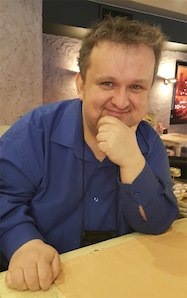 The weekend with Mark Solms: a practical introduction to neuropsychoanalysis, a clinical application.
The weekend with Mark Solms: a practical introduction to neuropsychoanalysis, a clinical application.
Seminar with the founder of neuropsychoanalysis was held at the Freud Institute in Frankfurt on May 26-27, 2017.

Within the framework of the seminar, problems that may seem paradoxical to classical psychoanalysts or, on the other hand, to neuropsychiatrists:
- affective bases of consciousness (conscious id)
- unconscious nature of cognition and the unconscious ego
- the role of memory in psychoanalytic therapy
- consolidation of cognitive content, automatisation, repression and the return of repressed as a manifestation of pathogenesis and etc.
Very relevant for the current psychotherapist was the consideration of the reconsolidation of neuronal mechanisms in the therapeutic process – “awareness replaces the old patterns coming from the memory.”
Particular attention was paid to the theory of affects and the role of affect in the therapeutic process. After all, the affect lies at the heart of the patient’s suffering, and paradoxically, at the heart of the awareness that arises within the therapeutic process.
In neuropsychoanalysis, practice relies on the theory of the emotional systems of Panksepp (SEEKING, LUST, RAGE, FEAR, PANIC, CARE, PLAY) which fundamentally differs from most classical theories of emotions.

The analysis of the therapeutic sessions also began with the identification of the dominant affect of the patient, repeated patterns in his behavior, and ended with an examination of the affective bases of the transferense-countertransferense relationship between the therapist and the patient.
Interesting was the conversation about the role of dreams and their neuropsychoanalytical interpretation.
Paradoxical was the conclusion of the seminar, when M.Solms described psychoanalysis and neuropsychoanalysis as forms of the PLAY (Panksepp). A therapeutic process is a process of game that allows to replay and realize pathological patterns of patient.




